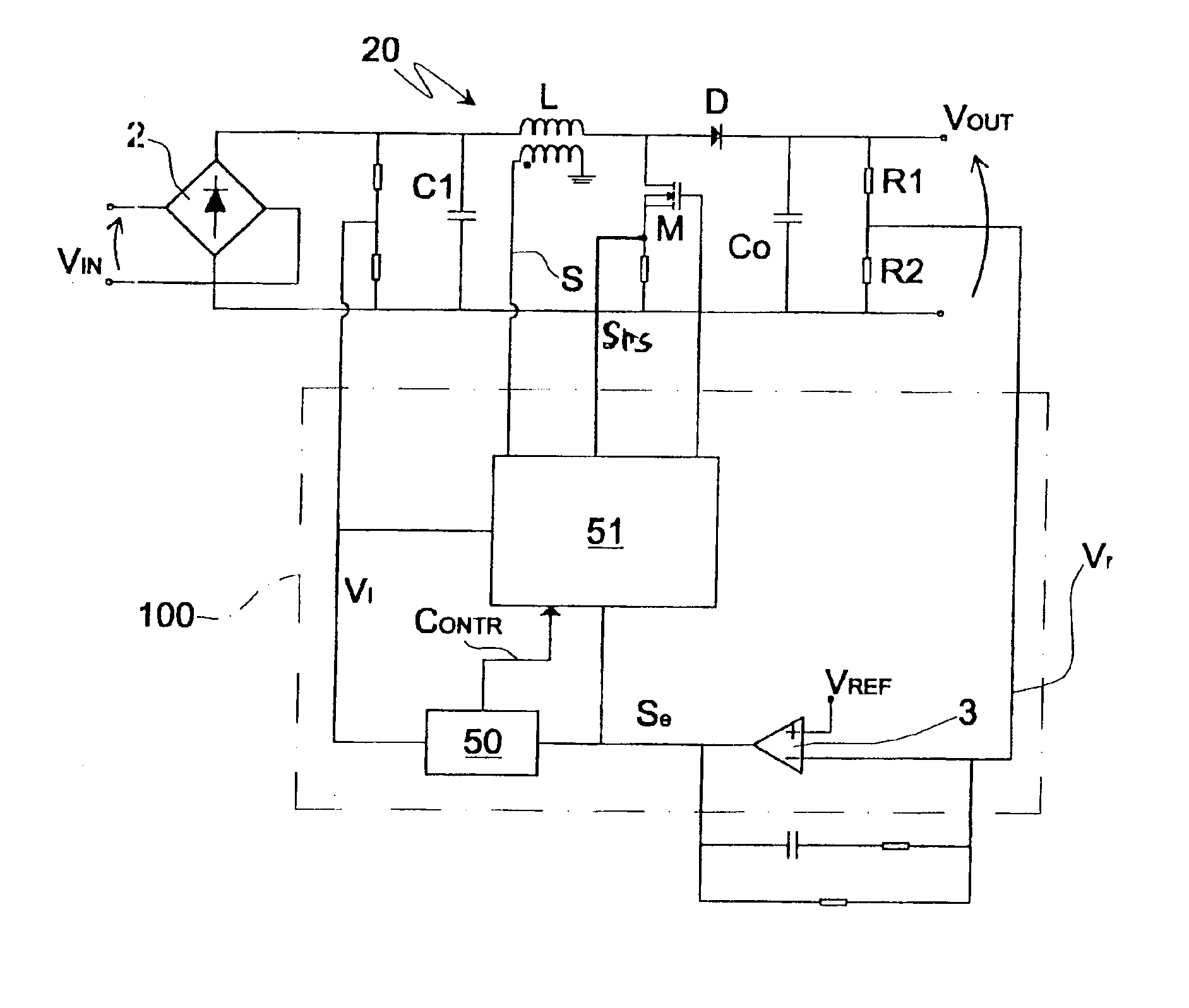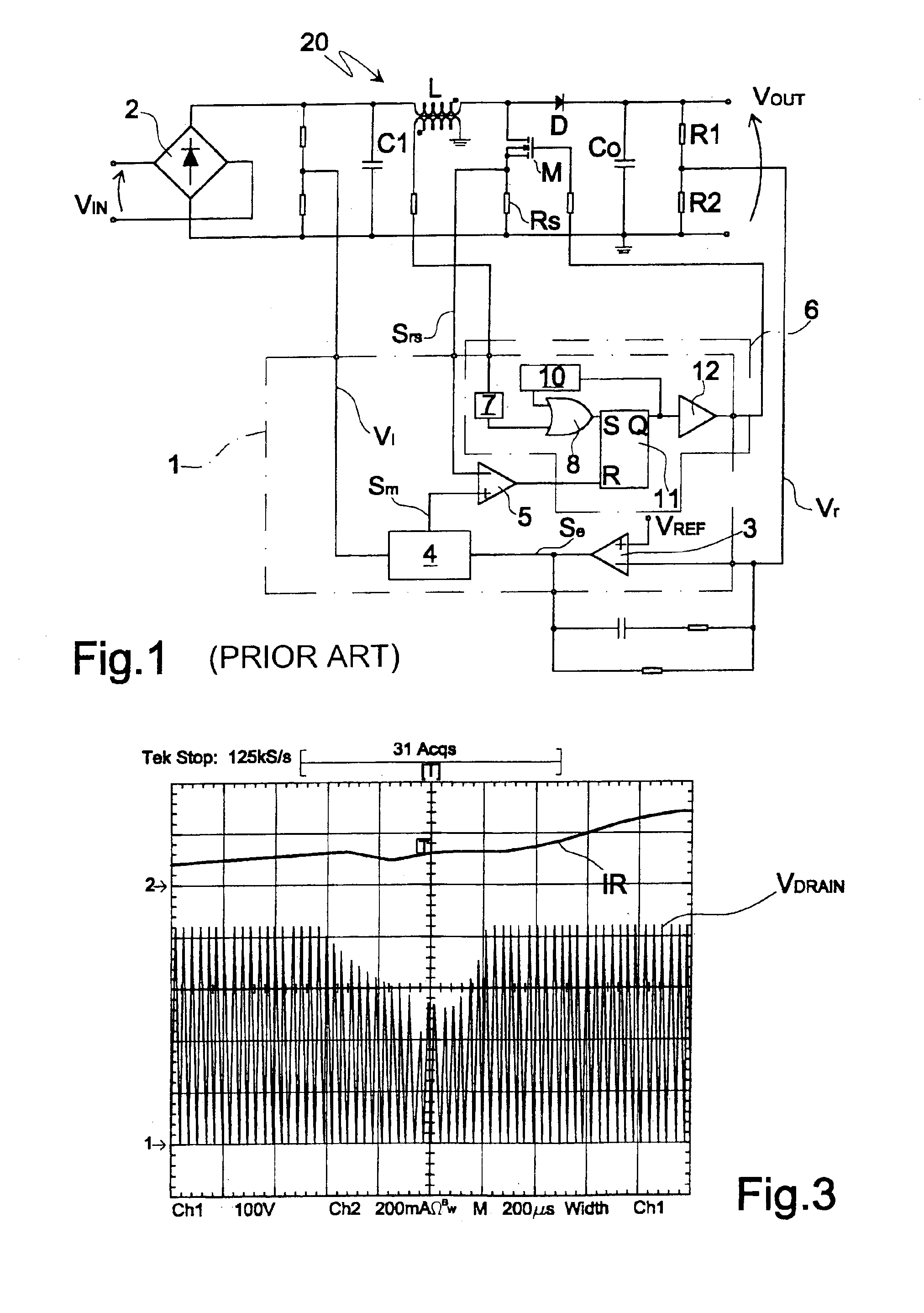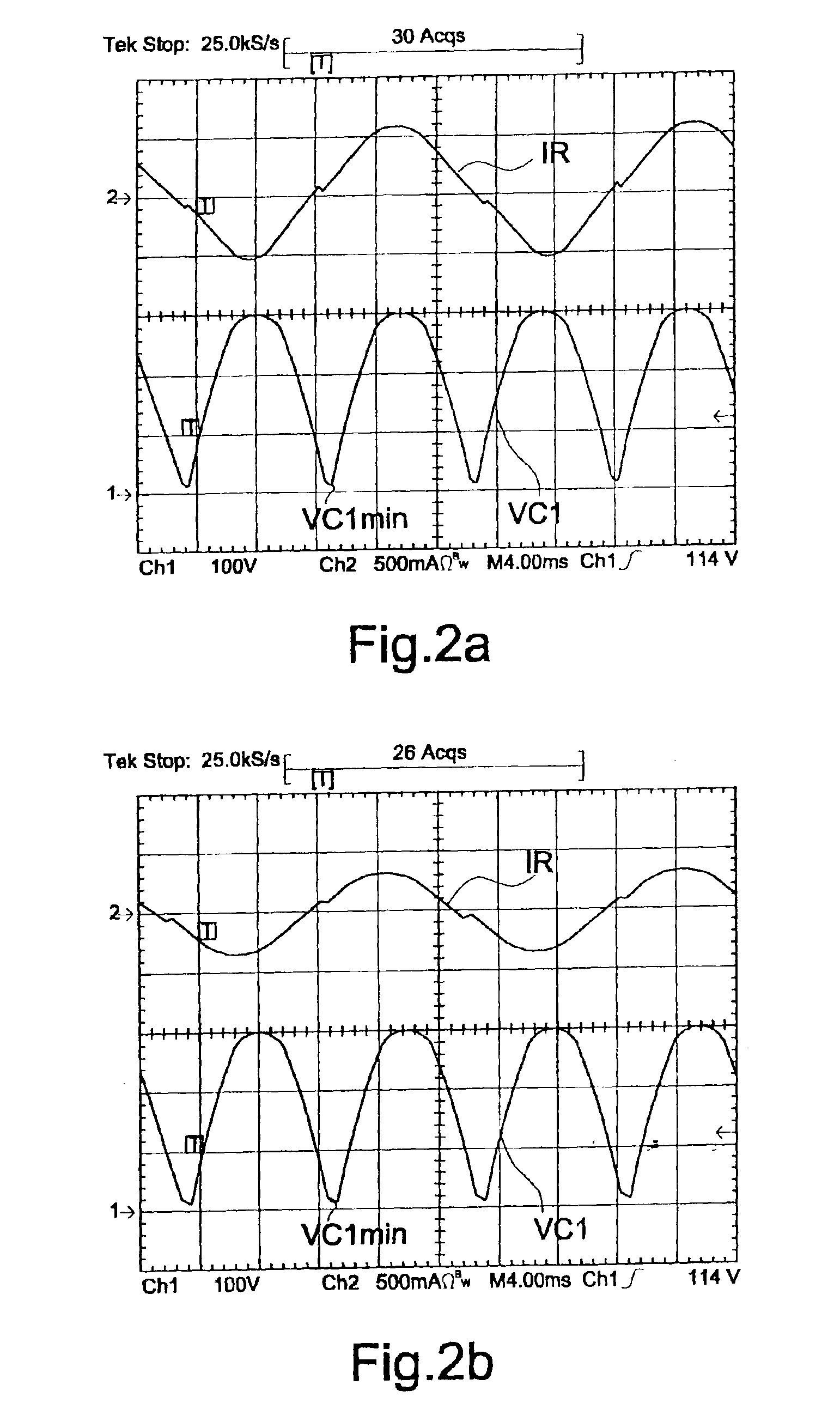Device for the correction of the power factor in power supply units with forced switching operating in transition mode
- Summary
- Abstract
- Description
- Claims
- Application Information
AI Technical Summary
Benefits of technology
Problems solved by technology
Method used
Image
Examples
first embodiment
[0036]FIG. 4 shows a PFC for a power supply unit with forced switching operating in transition mode according to the invention; the elements that are the same as the circuit in FIG. 1 will be indicated by the same references. The PFC comprises a boost converter 20 provided with a full-wave diode rectifier bridge 2 that has a network input voltage Vin, a capacitor C1 that has a terminal connected to the diode bridge 2 and the other terminal grounded, an inductor L connected to a terminal of the capacitor C1, a MOS M power transistor with its drain terminal connected to a terminal of the inductor L downstream of the latter and having the source terminal connected to a grounded resistance Rs, a diode D with its anode connected to the terminal shared by the inductor L and the transistor M and the cathode connected to a capacitor Co, the other terminal of which is grounded. The boost converter 20 generates a DC output voltage Vout that is greater than the network maximum peak voltage, ty...
second embodiment
[0052]FIG. 9 shows a block diagram of a circuit of a PFC for a power supply unit with forced switching operating in transition mode according to the present invention. Said circuit comprises the block 50 of FIG. 4 and the multiplier 4 that has the input signals Vi and Se the provides the output signal Sm; the signal Contr leaving block 50 is sent to the non-inverting input of the comparator 5.
[0053]The block 50 enables a positive voltage offset to be added to the signal Sm leaving the multiplier 4 only during the instants of time in which the network voltage Vin has a value close to zero. The positive voltage offset is higher the higher is the network voltage Vin and the lower is the output load. The positive voltage offset is created by adding to the signal Sm from the multiplier 4 a small portion of the signal present on one of its inputs, in other words a portion of the signal Vi or a portion of the signal Se so as to obtain the signal Contr that is sent to the non-inverting inpu...
PUM
 Login to View More
Login to View More Abstract
Description
Claims
Application Information
 Login to View More
Login to View More - R&D
- Intellectual Property
- Life Sciences
- Materials
- Tech Scout
- Unparalleled Data Quality
- Higher Quality Content
- 60% Fewer Hallucinations
Browse by: Latest US Patents, China's latest patents, Technical Efficacy Thesaurus, Application Domain, Technology Topic, Popular Technical Reports.
© 2025 PatSnap. All rights reserved.Legal|Privacy policy|Modern Slavery Act Transparency Statement|Sitemap|About US| Contact US: help@patsnap.com



